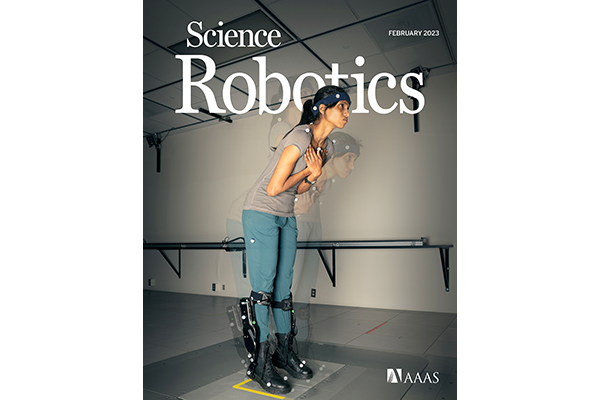Shepherd’s Research Featured on Cover of Science Robotics

Bouve/MIE Assistant Professor Max Shepherd’s research on “Exoskeletons need to react faster than physiological responses to improve standing balance” was featured on the cover of Science Robotics.
Abstract:
Maintaining balance throughout daily activities is challenging because of the unstable nature of the human body. For instance, a person’s delayed reaction times limit their ability to restore balance after disturbances. Wearable exoskeletons have the potential to enhance user balance after a disturbance by reacting faster than physiologically possible. However, “artificially fast” balance-correcting exoskeleton torque may interfere with the user’s ensuing physiological responses, consequently hindering the overall reactive balance response. Here, we show that exoskeletons need to react faster than physiological responses to improve standing balance after postural perturbations. Delivering ankle exoskeleton torque before the onset of physiological reactive joint moments improved standing balance by 9%, whereas delaying torque onset to coincide with that of physiological reactive ankle moments did not. In addition, artificially fast exoskeleton torque disrupted the ankle mechanics that generate initial local sensory feedback, but the initial reactive soleus muscle activity was only reduced by 18% versus baseline. More variance of the initial reactive soleus muscle activity was accounted for using delayed and scaled whole-body mechanics [specifically center of mass (CoM) velocity] versus local ankle—or soleus fascicle—mechanics, supporting the notion that reactive muscle activity is commanded to achieve task-level goals, such as maintaining balance. Together, to elicit symbiotic human-exoskeleton balance control, device torque may need to be informed by mechanical estimates of global sensory feedback, such as CoM kinematics, that precede physiological responses.